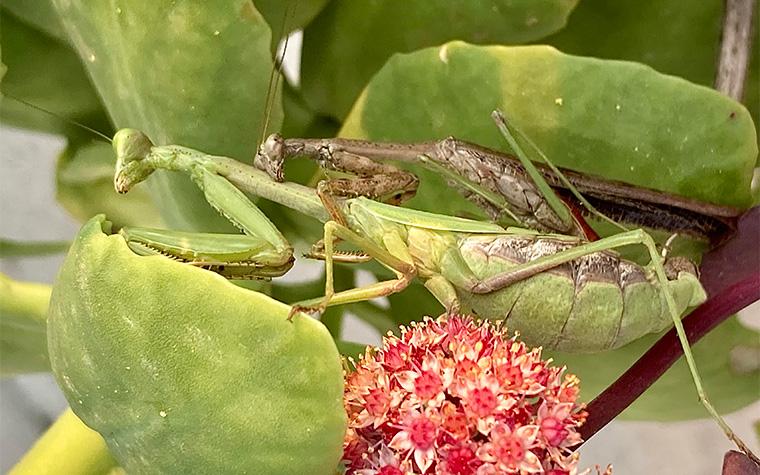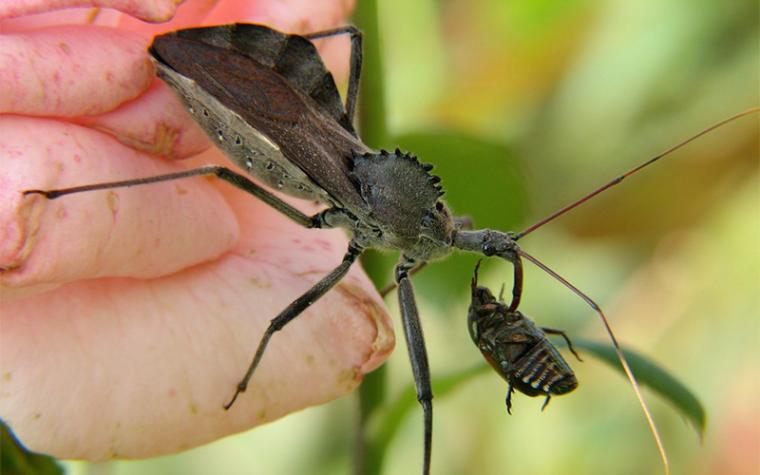COLUMBIA, Mo. – Valentine’s Day isn’t just for humans, says University of Missouri Extension urban entomologist Emily Althoff. Missouri insects need and deserve love, too.
Insects affect the environment with major roles in pollination, pest control, decomposition and the food web, Althoff says. “Ensuring insects are happy and healthy is important to sustaining our environment as well as agriculture.”
Take these steps to show Missouri insects some love, she says: 1) Learn about at-risk species; 2) Limit pesticide use and use according to label instructions; 3) Plant flowers that bloom through the season; and 4) Protect existing habitats.
Native bees: Bee our Valentine
Learn about the wild world of Missouri’s native bumblebees, leafcutter and mason bees, carpenter bees, mining bees and more.
Encourage bee populations by incorporating flowering plants that bloom throughout the season. Enhance natural areas by using undisturbed pastures, sunny bare patches and dead snags that provide nesting sites as part of the design. Also, plant cover crops and reduce tillage.
Wheel bugs: I’m head over wheels for you
These “wheely,” weird-looking bugs get their name from the cog-like protrusions from their thorax. They are the only species in the United States with this feature.
While wheel bugs aren’t as lovable as some other insects, they are insect predators that even eat the brown marmorated stink bug. “Love wheel bugs from afar because of their painful bite,” warns Althoff.
American burying beetle: Orange you glad we’re Valentines?
The American burying beetle (Nicrophorus americanus) is a native to Missouri and has a special story to tell, says Althoff. The largest carrion beetles in North America, they play a critical role as decomposers. They live in family groups where both parents care for the young.
This beetle was listed as a federally endangered species in 1989 largely due to a reduction of threats in its habitat – prairies, savannas and Mississippi lowlands. In 2021, it was reclassified to federally threatened.
This burying beetle gets a heart emoji for reducing pesky flies, helping with nutrient cycling and reducing disease by decomposing dead animals.
Ladybugs: You’re cute as a bug, Valentine!
This native ladybug species can be differentiated from the invasive Harmonia axyridis by looking for an “M” shape on the pronotum or shield behind its head. The native species does not have this.
Both the larvae and adults consume pests. Plant continual flowering plants and retain brush and leaves for overwintering habitat to encourage ladybugs. Also, limit pesticide use.
Praying mantids: You never have to worry about my ex
These alien-looking creatures are beneficial in gardens despite their troubling expression of love. Female mantids occasionally eat the male’s head after mating. However, this is not as common as widely believed.
“They are generalist predators that use their raptorial front legs to grasp prey,” says Althoff.
Monarch butterflies: You make my heart flutter
Monarch butterflies are some of the most charismatic insects in North America. Unfortunately, there has been an 80% decrease in population since the 1990s.
This may be due to loss of milkweed habitat, pesticide use, destruction of overwintering sites, and changing weather conditions. Encourage monarch habitats by planting preferred hosts and learning how to use roadsides and rights-of-way for monarch plantings.
Hover flies: You’re pretty fly, Valentine
You might mistake these syrphid hover flies for bees but look closely, says Althoff. Bees and wasps have four wings, while flies have two.
“Have no fear though, these flies are beneficial pollinators, second only to bees,” she says. Their larvae feed on aphids, caterpillars, leafhoppers, planthoppers, mealy bugs and thrips. Encourage syrphids by planting continual flowering plants, allowing some pests to serve as food, providing wind breaks and limiting pesticide applications.
Photos
Praying mantids
Praying mantids may not be a dream date for Valentine’s Day, but they are beneficial in gardens, says University of Missouri Extension urban entomologist Emily Althoff. She encourages the public to show some love to Missouri insects. Photo by Linda Geist.
Wheel bug
“Bug Eat Bug.” Flickr photo by audreyjm529 shared under a Creative Commons (BY) license.

